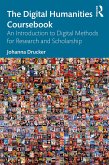Information Technology (IT) is conquering the world. It affects our jobs, our lives as private citizens, and society. Its impact is greater than other technologies, such as railways, personal cars, and the telephone. However, while most can understand the potential and constraints of these technologies, IT is often experienced as a "black box," producing its effects without giving a clue as to how they are achieved. The aim of How Information Technology Is Conquering the World is to open this box and to offer a basic knowledge of the technology and how it works. We will then understand why IT can put toll both operators, metro train engineers, and stockbrokers out of a job, but at the same time have limited impact on bus drivers, nurses, and teachers.
How Information Technology Is Conquering the World focuses on the interface between the technologies and the real world in order to explore not only where these technologies have their advantages but also where their limitations become apparent. The difficulty of introducing a new technology is emphasized with the practical goal of enabling readers to use technology to full advantage. This book is useful for those involved in, affected by, or interested in the technology; for students taking an introductory course in computing; and for managers and others who are interested in seeing how this rapidly evolving technology will affect their lives, jobs, and businesses now and in the future.
How Information Technology Is Conquering the World focuses on the interface between the technologies and the real world in order to explore not only where these technologies have their advantages but also where their limitations become apparent. The difficulty of introducing a new technology is emphasized with the practical goal of enabling readers to use technology to full advantage. This book is useful for those involved in, affected by, or interested in the technology; for students taking an introductory course in computing; and for managers and others who are interested in seeing how this rapidly evolving technology will affect their lives, jobs, and businesses now and in the future.









